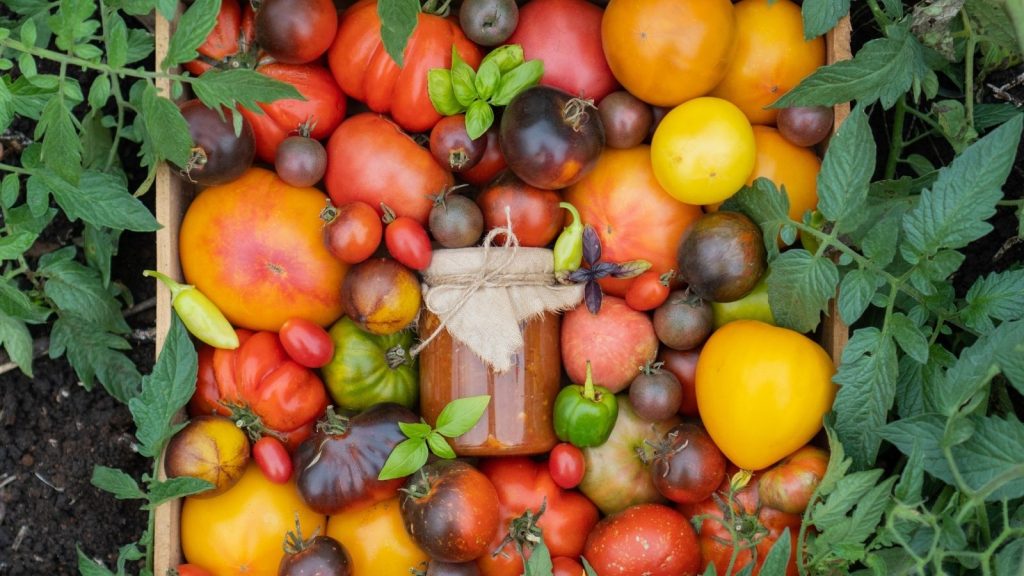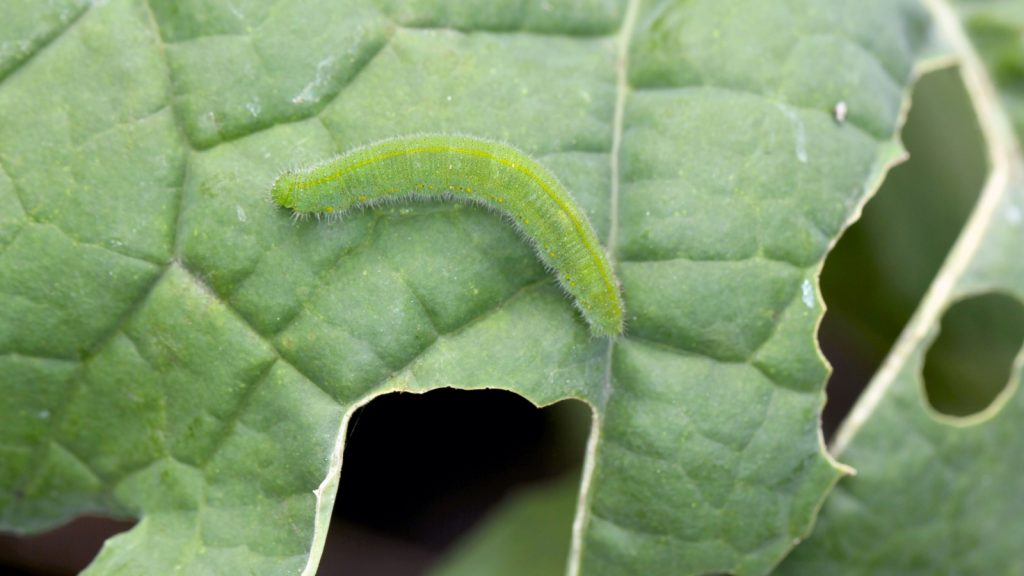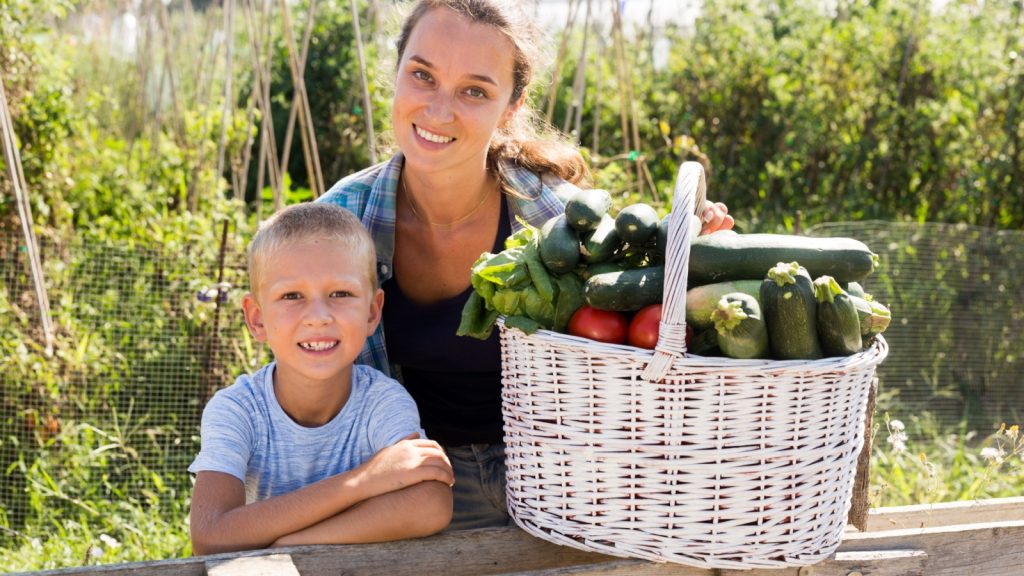I’ve been growing tomatoes for more years than I care to remember, and I’ve learned that these popular fruits can be both incredibly rewarding and frustratingly fickle. Whether you’re planting your first tomato seedling or you’re a seasoned gardener looking to improve your harvest, these hard-won tips from our own garden successes (and failures) will help you grow your most productive, flavorful tomatoes yet.
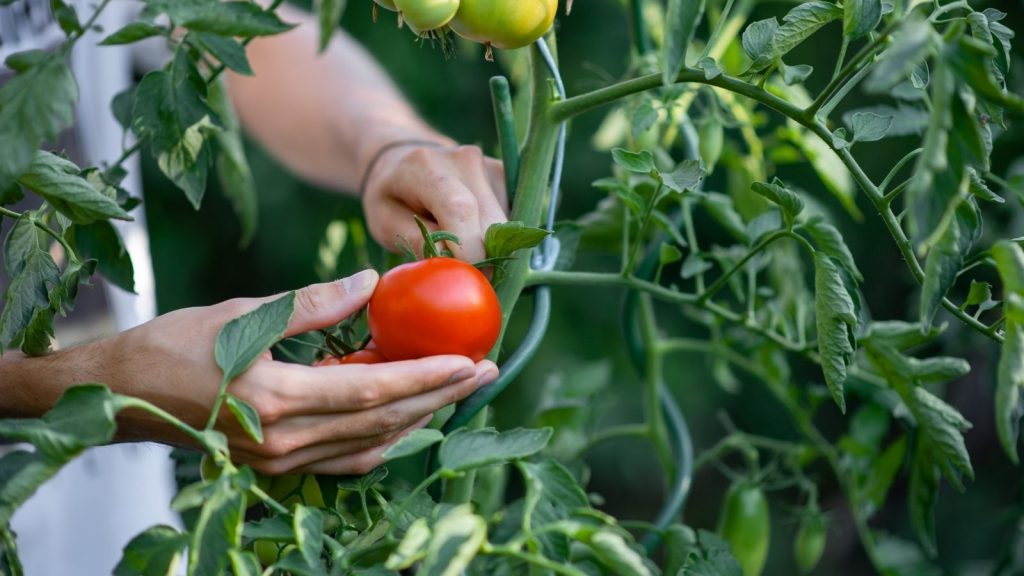
Start With Great Soil
Tomatoes are heavy feeders with specific soil needs. In our garden, we’ve found that tomatoes thrive in well-draining soil with plenty of organic matter. Before planting, we amend each planting hole with a generous shovelful of finished compost. This provides a slow-release source of nutrients throughout the growing season.
Unlike many garden vegetables, tomatoes actually prefer slightly acidic soil with a pH between 6.0 and 6.8. If you’re dealing with clay soil like we are, raised beds or large containers filled with quality soil can make a world of difference. Our tomato production doubled when we moved from in-ground planting to 24-inch deep raised beds filled with a mix of native soil, compost, and a bit of peat moss for drainage.
One mistake we made for years was adding too much nitrogen. While this creates beautiful, lush plants, it often results in fewer fruits. Now we use compost at planting time and supplement with a phosphorus-rich organic fertilizer (like bone meal) when the first flowers appear to encourage fruiting rather than just leaf growth.
Choose the Right Varieties for Your Space
Not all tomatoes are created equal, and selecting varieties that match your growing conditions is crucial. After experimenting with dozens of varieties, we’ve learned to be strategic about our choices.
For our shorter growing season, we focus primarily on determinate and early-maturing indeterminate varieties. Determinate tomatoes (often labeled “bush” varieties) grow to a certain size, produce all their fruit within a few weeks, then decline. These are perfect for canning projects since you get a concentrated harvest.
Indeterminate varieties keep growing and producing until killed by frost. These give us fresh tomatoes over a longer period but require more robust support systems. In our garden, we grow a mix of both types to spread out the harvest and meet different needs.
Some of our reliable performers include:
- ‘San Marzano’ (indeterminate paste tomato, excellent for sauce)
- ‘Stupice’ (indeterminate, incredibly early and productive even in cool summers)
- ‘Roma VF’ (determinate paste tomato, disease-resistant and productive)
- ‘Cherokee Purple’ (indeterminate heirloom with exceptional flavor, worth the wait)
- ‘Sun Gold’ (indeterminate cherry tomato, produces mountains of sweet orange fruits)
In our garden, we’ve had the best luck with varieties that mature in under 80 days. Those in warmer climates have more flexibility with longer-season varieties.
Plant Deep for Strong Roots
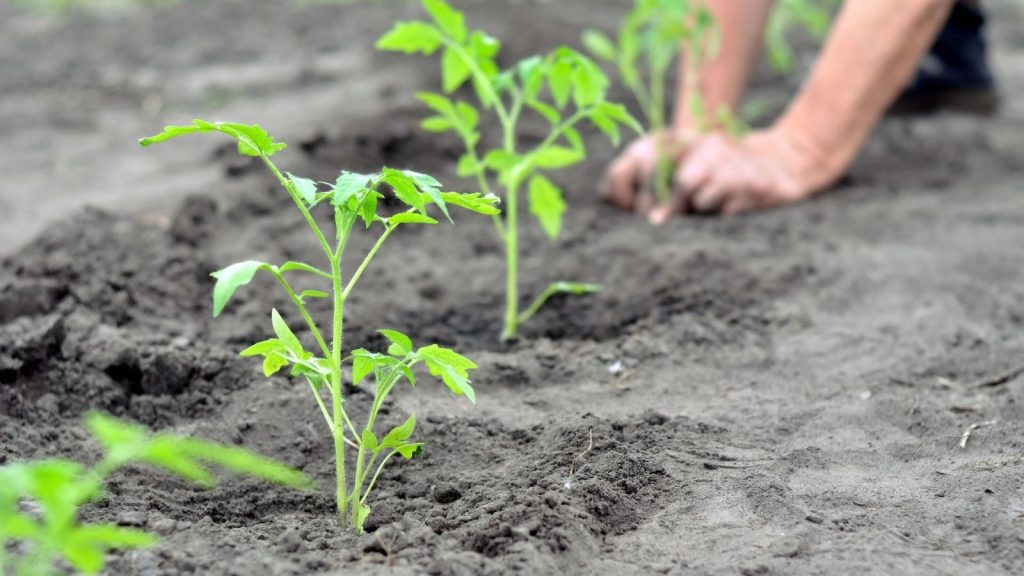
One of the most counterintuitive gardening lessons we’ve learned is that tomatoes, unlike most garden plants, benefit from deep planting. Tomato stems will develop roots all along any portion buried in soil. These extra roots create stronger, more drought-resistant plants.
When transplanting seedlings, we remove the lower leaves and bury at least half of the stem—sometimes up to 2/3 of the plant. For extra-tall, leggy seedlings, we’ve even planted them horizontally in a shallow trench with just the top few inches of the plant above ground. Within weeks, the buried stem develops an extensive root system, and the visible portion stands upright.
This deep planting technique has dramatically improved our tomato harvests, especially during dry spells when those extra roots can access moisture deeper in the soil.
Support Your Plants Properly
Providing adequate support for tomato plants from the beginning prevents heartbreak later in the season. We learned this lesson the hard way after watching a promising crop collapse under its own weight during a summer storm.
For determinate varieties, simple tomato cages usually provide sufficient support. However, for indeterminate types that can grow 6-8 feet tall, we use either heavy-duty metal cages reinforced with stakes or a Florida weave system with T-posts and twine.
One system that’s worked particularly well in our windy location is using cattle panels arched between raised beds to create a tomato tunnel. The plants grow up and over the arch, making harvesting easy and providing excellent airflow around the plants. As an added benefit, the panels can be reused for many years.
Whatever support system you choose, install it at planting time to avoid damaging roots later. We’ve learned it’s always better to provide more support than you think you’ll need—tomato plants can get surprisingly heavy when loaded with fruit!
Mulch, Mulch, Mulch
Consistent soil moisture is critical for preventing issues like blossom end rot and fruit splitting. After trying various irrigation methods, we’ve found that a good layer of organic mulch is the single most effective way to maintain even soil moisture.
We apply a 2-3 inch layer of straw mulch around our tomato plants after the soil has warmed (usually 2-3 weeks after planting). The mulch serves multiple purposes:
- Conserves soil moisture
- Suppresses weeds
- Prevents soil-borne diseases from splashing onto leaves
- Keeps fruits clean when they touch the ground
- Moderates soil temperature
In particularly hot areas, mulch also prevents soil from overheating, which can stress plants and reduce fruit set. For container-grown tomatoes, we’ve found that a layer of compost topped with straw works well to retain moisture.
Prune for Air Circulation
Proper pruning dramatically improves tomato health and productivity. We remove the suckers (the shoots that form in the crotch between the main stem and branches) on indeterminate varieties to improve air circulation and direct the plant’s energy toward fruit production rather than excessive foliage.
For determinate varieties, we prune minimally since their growth is naturally limited. However, we still remove any leaves touching the soil and thin interior foliage if the plants become too dense.
One pruning technique that’s been particularly successful in our humid climate is removing all leaves below the first flower cluster. This creates better airflow at the base of the plant and reduces the risk of soil-borne diseases splashing onto lower leaves during rain.
When pruning, we always use clean snips or scissors and work on dry plants to minimize disease spread. A small investment in time spent pruning weekly during the main growing season has paid huge dividends in healthier plants and higher yields.
Water Consistently (But Not Too Much)
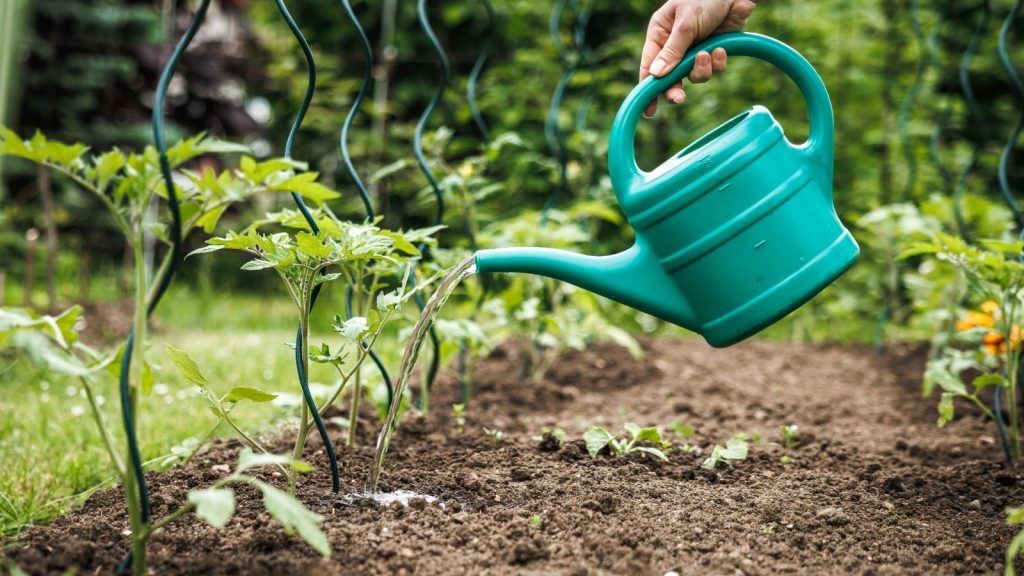
Inconsistent watering is the root of many tomato problems. We’ve found that deep, infrequent watering encourages stronger root development than frequent shallow watering.
In our garden, we water deeply once or twice a week, depending on rainfall and temperatures. For in-ground plants, this means about 1-2 gallons per plant each time. Container tomatoes need more frequent watering—sometimes daily during hot spells—but the principle remains the same: water deeply enough to reach the entire root zone.
We’ve also discovered that reducing water slightly once fruits begin to ripen intensifies flavor. While you don’t want plants to wilt, slightly drier conditions concentrate sugars and flavor compounds in the fruits.
One watering mistake we made for years was overhead sprinkling, which creates ideal conditions for fungal diseases. Now we use soaker hoses or drip irrigation to deliver water directly to the soil, keeping foliage dry.
Pest and Disease Management
After facing our share of tomato disappointments due to pests and diseases, we’ve developed a proactive approach that minimizes problems without resorting to harsh chemicals.
We start with prevention:
- Plant in different locations each year (crop rotation)
- Choose disease-resistant varieties when possible
- Maintain good air circulation through proper spacing and pruning
- Water at the base of plants, keeping foliage dry
- Apply organic mulch to prevent soil-borne disease splash
For common pests like hornworms, we inspect plants weekly and remove caterpillars by hand. Beneficial insects like parasitic wasps often help control these pests naturally if you avoid broad-spectrum insecticides.
When signs of early blight or septoria leaf spot appear (common in our humid climate), we immediately remove affected leaves and dispose of them away from the garden. A spray of diluted compost tea has helped boost our plants’ natural resistance to these fungal issues.
Harvest at Peak Ripeness
The difference between a grocery store tomato and a garden-ripe tomato is astounding, and timing your harvest correctly maximizes that home-grown flavor. We’ve learned that tomatoes develop their best flavor when they ripen fully on the vine.
However, once tomatoes show their first blush of color (called the “breaker stage”), they can be picked and will continue to ripen indoors with full flavor development. This is particularly useful when faced with an impending frost or if you’re seeing signs of pest damage.
For the absolute best flavor, we harvest in the morning after the dew has dried but before the intense heat of the day. Tomatoes picked at this time seem to have the perfect balance of acidity and sweetness.
Different varieties show ripeness differently. While the classic red slicing tomatoes are obviously red when ripe, varieties like ‘Cherokee Purple’ have a more subtle color change—they’re ready when the shoulders soften slightly and the color deepens from green to a dusky purple-brown.
End-of-Season Strategies
In our climate, maximizing the tomato harvest before frost requires some specific late-season tactics. About a month before our average first frost date, we stop pruning entirely and remove any new flower clusters that won’t have time to develop into mature fruit.
If frost threatens when we still have green tomatoes, we cover plants with old bedsheets or specialized row cover for temporary protection. For the remaining green tomatoes, we’ve had good success ripening them indoors by wrapping them individually in newspaper or placing them in a single layer in a box with an apple (which releases ethylene gas that promotes ripening).
Some green varieties, particularly paste tomatoes, also make excellent pickled green tomatoes or green tomato relish—a way to use every bit of the harvest even when frost cuts the season short.
Saving Seeds for Next Year
After finding a few varieties that perform exceptionally well in our specific growing conditions, we’ve started saving seeds from our best plants. This not only saves money but also gradually adapts the varieties to our unique microclimate.
To save tomato seeds, we select fruits from the healthiest plants showing the characteristics we want to preserve. After scooping out the seeds and surrounding gel, we ferment them in a bit of water for 2-3 days to remove the gelatinous coating that inhibits germination. Then we rinse, dry thoroughly on coffee filters, and store in labeled paper envelopes in a cool, dry place.
These saved seeds connect one growing season to the next and have become an important part of our tomato-growing tradition. Each year, our plants seem to perform a little better as they adapt to our specific conditions.
Whether you’re growing a single pot on a patio or dedicating a large garden plot to these versatile fruits, these techniques will help you grow your best tomatoes ever. Just remember that even experienced gardeners have occasional tomato disappointments—it’s all part of the learning process that makes those perfect sun-warmed tomatoes taste even sweeter when you succeed.
James is a former logistics coordinator and wilderness safety instructor, whose practical experience taught him the value of sensible preparedness and calm resilience. Passionate about self-reliance, James teaches everyday skills—like water purification, emergency communication, and outdoor safety—to help people confidently handle life's disruptions without fear or overwhelm. His approachable style combines real-world insights with relatable, personal stories and experiences.
